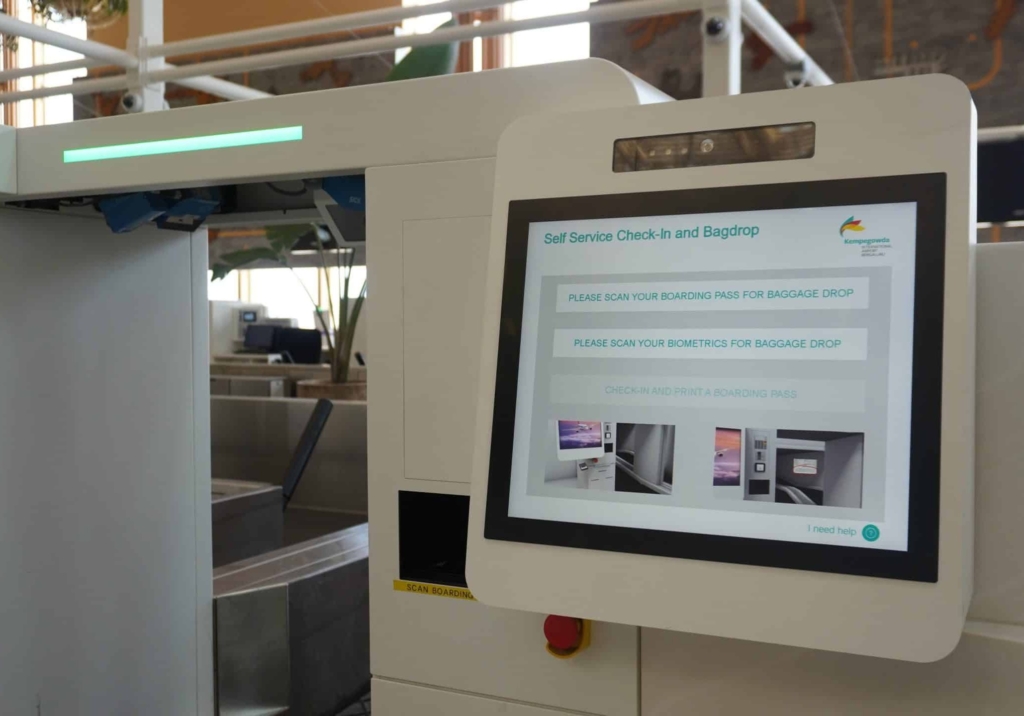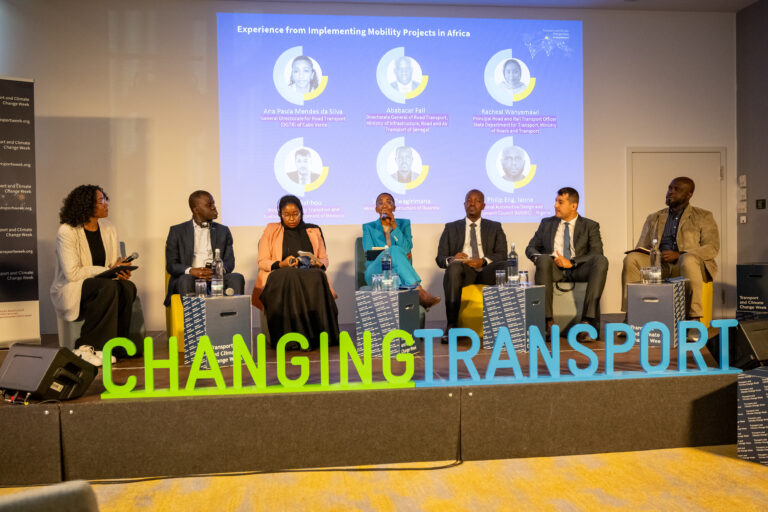The world’s most innovative airports in 2025: ACI–Amadeus Technology Innovation Awards – Aerospace Global News

Report on the 2025 ACI-Amadeus Technology Innovation Awards and Alignment with Sustainable Development Goals
Airports Council International (ACI) World and Amadeus have recognized leading airports for their technological advancements in the 2025 Technology Innovation Awards. The winning projects, implemented between January 2024 and May 2025, demonstrate a strong commitment to digital transformation, operational efficiency, and sustainable design, aligning with several key United Nations Sustainable Development Goals (SDGs).
Bengaluru’s Kempegowda International Airport: Biometric Passenger Processing
Project Overview
Kempegowda International Airport was awarded “Best Innovation in Airport Passenger-Related Processes” for its biometric-enabled, paperless bag drop system. This technology integrates with India’s DigiYatra digital identity platform, allowing passengers to use facial recognition for identity verification and baggage check-in, completing the process in under 60 seconds without physical documents.
Contribution to Sustainable Development Goals
- SDG 9: Industry, Innovation, and Infrastructure: The implementation of an end-to-end biometric journey represents a significant upgrade to airport infrastructure, fostering innovation and enhancing operational resilience.
- SDG 16: Peace, Justice, and Strong Institutions: By leveraging a national digital identity platform (DigiYatra), the system supports Target 16.9, which aims to provide legal identity for all, including through digital means.
- SDG 11: Sustainable Cities and Communities: The paperless nature of the process reduces waste and contributes to more sustainable operational practices within the urban infrastructure of the airport.
Queen Alia International Airport, Amman: AI-Driven Operations Management
Project Overview
Winning the “Best Innovation in Airport Operations and Installations Management” category, Queen Alia International Airport implemented a Smart Cleaning System (SCS). This system utilizes AI to integrate data from flight schedules, passenger flow monitors, and IoT sensors. It provides a centralized dashboard for proactive management of cleaning staff, robotics, and resources.
Contribution to Sustainable Development Goals
- SDG 8: Decent Work and Economic Growth: The SCS promotes higher economic productivity through technological upgrading and innovation. It enables more efficient workforce allocation and improves operational management.
- SDG 9: Industry, Innovation, and Infrastructure: The digitalization of a traditionally manual function through AI and IoT integration exemplifies the adoption of innovative technologies to enhance infrastructure efficiency.
- SDG 3: Good Health and Well-being: By optimizing cleaning schedules based on real-time data, the system ensures higher standards of cleanliness and sanitation, contributing directly to public health and passenger well-being.
Roland Garros Airport, Réunion Island: Bioclimatic Terminal Design
Project Overview
Roland Garros Airport received the “Best Innovation – Airport on the Rise” award for its new bioclimatic terminal. The design prioritizes sustainability by utilizing passive cooling, natural ventilation, and strategic landscaping to regulate temperature and minimize energy consumption, making it a model for climate-conscious development in tropical environments.
Contribution to Sustainable Development Goals
- SDG 7: Affordable and Clean Energy: The terminal’s design significantly reduces reliance on energy-intensive mechanical air conditioning, promoting energy efficiency and the use of natural resources for cooling and lighting.
- SDG 13: Climate Action: This project is a direct response to climate change, integrating climate resilience and adaptation measures into infrastructure planning and reducing the airport’s carbon footprint.
- SDG 11: Sustainable Cities and Communities: The terminal serves as a benchmark for sustainable building practices, demonstrating how critical infrastructure can be developed to minimize environmental impact.
- SDG 15: Life on Land: The design incorporates rainwater management systems that support local biodiversity, contributing to the protection and restoration of terrestrial ecosystems.
Global Airport Trends and SDG Implications
The 2025 award winners highlight key industry trends that are advancing the Sustainable Development Goals within the aviation sector.
- Digital Identity and Biometrics: The move towards seamless, paperless passenger journeys using digital identity aligns with SDG 9 (Innovation) and SDG 16 (Legal Identity), creating more efficient and inclusive infrastructure.
- AI and Data in Operations: The application of AI to core airport functions like maintenance and resource planning enhances efficiency and productivity, supporting SDG 8 (Decent Work and Economic Growth) and SDG 9 (Industry and Infrastructure).
- Sustainable Infrastructure: The increasing adoption of energy-efficient and climate-responsive designs, even at smaller airports, is crucial for achieving SDG 7 (Clean Energy), SDG 11 (Sustainable Communities), and SDG 13 (Climate Action).
Analysis of Sustainable Development Goals in the Article
1. Which SDGs are addressed or connected to the issues highlighted in the article?
-
SDG 7: Affordable and Clean Energy
The article highlights the Roland Garros Airport’s bioclimatic terminal, which is designed to “reduce energy demand” and “reduce reliance on mechanical cooling systems.” By using passive cooling, natural ventilation, and maximizing daylight, the project directly contributes to increasing energy efficiency, a key component of SDG 7.
-
SDG 9: Industry, Innovation, and Infrastructure
This is the most prominent SDG in the article. The entire piece focuses on the “Technology Innovation Awards” which reward digital transformation and sustainable design in airport infrastructure. All three winning projects are examples of this: Bengaluru’s biometric system, Queen Alia’s AI-powered operations, and Roland Garros’s sustainable terminal. These innovations aim to create more efficient, resilient, and technologically advanced infrastructure.
-
SDG 11: Sustainable Cities and Communities
The development of sustainable infrastructure, such as the “sustainable bioclimatic terminal” at Roland Garros Airport, is a core aspect of making human settlements inclusive, safe, resilient, and sustainable. Airports are critical infrastructure for cities and regions, and making them more sustainable contributes directly to the goals of SDG 11.
-
SDG 13: Climate Action
The article explicitly mentions that the Roland Garros terminal is a model for “climate-conscious development” and that airports face “pressure to decarbonise.” The terminal’s design, which harnesses prevailing winds and reduces the need for air conditioning, is a direct action to mitigate climate change by reducing energy consumption and associated greenhouse gas emissions.
-
SDG 15: Life on Land
A specific detail about the Roland Garros Airport project connects it to this goal. The article states that its design “manages rainwater in ways that also support local biodiversity.” This action demonstrates a commitment to integrating infrastructure development with the protection and promotion of local ecosystems.
2. What specific targets under those SDGs can be identified based on the article’s content?
-
Target 7.3: By 2030, double the global rate of improvement in energy efficiency.
The Roland Garros Airport’s bioclimatic terminal is a direct effort to improve energy efficiency. The article describes how its design “reduces reliance on mechanical cooling systems” and “reduce[s] energy demand,” which aligns perfectly with this target.
-
Target 9.1: Develop quality, reliable, sustainable and resilient infrastructure… to support economic development and human well-being.
All three awarded projects contribute to this target. Bengaluru’s biometric system enhances reliability and efficiency, Queen Alia’s AI system improves operational resilience, and Roland Garros’s terminal is a prime example of sustainable infrastructure development.
-
Target 9.4: By 2030, upgrade infrastructure and retrofit industries to make them sustainable, with increased resource-use efficiency and greater adoption of clean and environmentally sound technologies and industrial processes.
This target is addressed by all winners. The adoption of biometric and AI technologies represents the use of “environmentally sound technologies” to increase efficiency. The Roland Garros terminal is a new infrastructure project built on principles of sustainability and resource-use efficiency (e.g., natural cooling instead of energy-intensive air conditioning).
-
Target 13.1: Strengthen resilience and adaptive capacity to climate-related hazards and natural disasters in all countries.
The design of the Roland Garros terminal is described as being “suited to tropical environments” and “climate-responsive.” This approach of designing infrastructure to work with local climate conditions, such as harnessing winds for cooling, strengthens its resilience to climate-related challenges like rising temperatures.
-
Target 15.5: Take urgent and significant action to reduce the degradation of natural habitats, halt the loss of biodiversity and, by 2020, protect and prevent the extinction of threatened species.
The article’s mention that the Roland Garros terminal’s design “manages rainwater in ways that also support local biodiversity” is a direct action contributing to this target by integrating biodiversity support into an infrastructure project.
3. Are there any indicators mentioned or implied in the article that can be used to measure progress towards the identified targets?
-
Implied Indicator for Target 7.3: Reduction in energy consumption.
The article states the terminal’s design aims to “reduce energy demand.” Progress could be measured by tracking the airport’s energy consumption per passenger or square meter, comparing the new terminal to older, conventionally designed ones. This aligns with the concept of Indicator 7.3.1 (Energy intensity).
-
Implied Indicator for Target 9.1: Passenger processing time and efficiency.
For Bengaluru’s airport, the article provides a specific metric: “completes baggage check-in in under 60 seconds.” This is a direct indicator of improved efficiency and service quality for passenger infrastructure, reflecting the goals of Indicator 9.1.2 (Passenger and freight volumes).
-
Implied Indicator for Target 9.4: Reduction in CO2 emissions.
The article mentions the “pressure to decarbonise” and highlights “sustainability-led” design. The success of the Roland Garros terminal would be measured by its lower carbon footprint compared to a standard terminal, which relates to Indicator 9.4.1 (CO2 emission per unit of value added).
-
Implied Indicator for Target 15.5: Health of local biodiversity.
The statement about managing rainwater to “support local biodiversity” implies that a measure of success would be the health and diversity of the flora and fauna in the airport’s landscaped areas. This could be measured through ecological surveys, tracking the number and variety of native species present.
4. Table of SDGs, Targets, and Indicators
| SDGs | Targets | Indicators (as implied in the article) |
|---|---|---|
| SDG 7: Affordable and Clean Energy | Target 7.3: By 2030, double the global rate of improvement in energy efficiency. | Reduction in energy demand and reliance on mechanical cooling systems, measured by energy consumption per passenger or square meter. |
| SDG 9: Industry, Innovation, and Infrastructure |
Target 9.1: Develop quality, reliable, sustainable and resilient infrastructure.
Target 9.4: Upgrade infrastructure… to make them sustainable, with increased resource-use efficiency and greater adoption of clean and environmentally sound technologies. |
Passenger processing time (e.g., baggage check-in under 60 seconds).
Adoption of digital technologies like biometrics and AI for operational efficiency. Implementation of sustainable and climate-responsive building designs. |
| SDG 11: Sustainable Cities and Communities | Target 11.6: By 2030, reduce the adverse per capita environmental impact of cities. | Construction of sustainable airport infrastructure (bioclimatic terminal) that minimizes environmental impact. |
| SDG 13: Climate Action | Target 13.1: Strengthen resilience and adaptive capacity to climate-related hazards. |
Implementation of “climate-conscious” and “climate-responsive” terminal designs.
Reduction in CO2 emissions from airport operations due to energy efficiency (decarbonisation). |
| SDG 15: Life on Land | Target 15.5: Take urgent and significant action to reduce the degradation of natural habitats, halt the loss of biodiversity. | Implementation of rainwater management systems that support local biodiversity, measured by the health of local ecosystems. |
Source: aerospaceglobalnews.com
What is Your Reaction?
 Like
0
Like
0
 Dislike
0
Dislike
0
 Love
0
Love
0
 Funny
0
Funny
0
 Angry
0
Angry
0
 Sad
0
Sad
0
 Wow
0
Wow
0



















































.jpg.webp?itok=0ZsAnae9#)

























